A large share of countries around the world are now using Chinese AI surveillance technology, including facial recognition technology, in full or in part. This is according to a report by Carnegie Endowment for International Peace. Many countries are combining Chinese tech with U.S.-made surveillance tech, among them the U.S. and China themselves, but also India, Australia, Brazil and several European countries. Many countries in Latin America, South-East Asia, Africa and the Middle East are relying on Chinese technology alone after participating in the Belt and Road initiative, as are Japan, Italy and the Netherlands.
Get Started for FREE
Sign up with Facebook Sign up with X
I don't have a Facebook or a X account


 Your new post is loading... Your new post is loading...
 Your new post is loading... Your new post is loading...
“What may set IBM apart is the sheer number of IoT playing fields it engages in addition to AI and analytics, including cloud, development tool set, services, device management, storage and security. Add to that its longstanding reach into enterprise and industrial IT.
“The pattern in IoT is the same as the pattern in cloud; we're containerizing everything.”
Pál Kerékfy's insight:
A jelek szerint a dolgok internete (IoT, az a jelenség, hogy mindenféle érzékelők és egyéb ipari cuccok milliói kapcsolódnak hálózatra) már bőven kilépett a kísérletek, koncepcionális bemutatók világából. Sőt, már nem csak arról van szó, hogy megvehetjük az eszközöket és a szoftverkomponenseket, hogy megépítsük a saját rendszerünket!
Már ott tartunk, hogy kész “dobozos” megoldások (szolgáltatások) kaphatók. Ez az érettség jele. Milyen gyors lesz a növekedés?
#IBM #Watson #IoT #cloud #containerization #artificialintelligence #AI
As an industry we have made a habit of making a complex business even more complicated by applying solutions of the past instead of embracing the opportunities digitization can provide us all today.Current problems include:
Pál Kerékfy's insight:
Itt van a friss hír a Maersk és az IBM közös megoldásáról, amitől milliárdok megtakarítását várják (dollárban). Amikor februárban írtam róla, még csak korlátozott próbaüzemben működött. Pár napja hivatalosan is elindult.
Mit várnak tőle a létrehozói? Mire számítok én? A februári cikkecskémben leírtam.
Most az az újdonság, hogy már nem csak a Maersk saját rendszere, hanem nyitott mindenki számára, aki érdekelt a szállítmányozásban. Mindenki csökkentheti a költségeit, pontosabbá és gyorsabbá teheti a munkáját, csökkentheti a kockázatait, és ezek következtében javíthatja az üzleti lehetőségeit.
Érdekes aspektusa a kérdésnek, hogy a Maersk vetélytársai be akarnak-e szállni a rendszerbe. Láttunk már olyat, hogy nem volt teljesen versenysemleges egy ilyen megoldás! Másrészt, olyan együttműködés is lehetséges, ami mindenkinek jó, az üzleti versenytől függetlenül. Többet erről a múlt heti írásomban.
A Maersk arra hivatkozik bejelentésében, hogy a Világgazdasági Fórum szerint az akadályok elhárítása 15%-kal növelhetné a nemzetközi kereskedelmet (ami gazdasági növekedést és új munkahelyeket is jelentene). És, íme, kezdetét veszi ez a növekedés!
Tényleg érdekel, hogyan fogadják a többiek! Akkor szól majd nagyot, ha sok szállítmányozó és sok ország hatóságai elkezdik használni.
@Maersk #TradeLens #blockchain #WEF #Maersk #IBM @IBMblockchain #transportation #trade #collaboration
By integrating with Google, IBM and Microsoft, Box is bringing AI capabilities to its platform, but it still won't be enough to steal Google Drive or Microsoft OneDrive customers.
Pál Kerékfy's insight:
Ha a Boxban vannak az adataink, könnyen tudjuk (majd) a vezető mesterséges intelligencia szolgáltatásokat használni az elemzésükre.
Azt hiszem, az ilyen integrációs megoldások teszik igazán használhatóvá a felhőket. Ha nem kell ide-oda mozgatni az adatokat, nem kell több példányt karbantartani belőlük, sokkal egyszerűbb lesz az élet!
Persze nem csak szépség és könnyebbség jár ezzel! Ha általános hozzáférést kap a Watson a Boxban tárolt adatainkhoz, fogunk-e erre emlékezni pár hónap múlva, amikor olyan különösen érzékeny adatot teszünk fel, amit nem akarnánk a Warson orrára kötni?
#Box #Dropbox #IBM #Watson #Google #BoxSkills
Global insurance company Marsh is piloting a proof of insurance platform on a blockchain with IBM's help. Marsh sees great opportunity in leveraging blockchain technology to better serve our clients by maximizing efficiency and creating new opportunities in the insurance value chain.
Pál Kerékfy's insight:
Nemrég írtam arról, hogy a nemzetközi szállítmányozásban évi néhány milliárd dollárt terveznek megtakarítani azzal, hogy a rengeteg, ide-oda küldözgetett, kétes hitelességű papírt felváltják blokklánccal hitelesített elektronikus dokumentumokkal.
Most egy biztosítási bróker jelentette be, hogy még idén átáll erre a technológiára. Ezzel fogják ellenőrizni és hitelesíteni a kötvényeket. A Marsh elég szép forgalmú bróker, 2016-ban kétmilliárd dollár volt a profitja!
#IBM #blockchain #Marsh #insurance
Lexi egy olyan chatbot, amely magyarul válaszol polgárjogi kérdésekre, a feladata pedig jelenleg az, hogy demonstrálja, minként lehet használni a kognitív technológiákat a jog területén. A tanfolyam előrehaladtával nemcsak a diákok, de Lexi tudása is bővül, hiszen a chatbot a használat során folyamatosan tanul, így egyre bonyolultabb kérdésekre tud válaszolni.
Pál Kerékfy's insight:
Nagyon örülök, hogy jön Lexi! Éppen nemrég írtam az angol nyelvterületen már nagy sikereket elért jogi problémákban segítő robotról (valójában mesterséges intelligenciával támogatott szoftverről): Akkor még azt írtam, hogy más nyelven és a kontinentális jogban még sokat kell várni ugyanerre. És most olvasom, hogy már jön a magyar verzió is. Egyelőre még csak az egyetemen, de előbb-utóbb nyilvános lesz. Nincs meglepetés: ez is az IBM Watson felhasználásával készül. Még egy kis olvasnivaló a robotok szerepéről: #IBM #Watson #iLex #robot #robolawyer #PTE #ITBusiness
Artificial intelligence is moving from science fiction to practical reality fast, and it's in banks' best interest to gear up now for the changes ahead. Here are some strategies to consider.
Already some AI pioneers have emerged in the financial industry just over the past year: Bank of New York Mellon's use of robotic process automation in trade settlement and other back-office operations; Nasdaq's search for signs of market tampering with an assist from AI; UBS' initiative to answer basic customer-service questions through Amazon's virtual assistant, Alexa; and USAA's development of its own virtual assistant.
Australia's ANZ Group has been using IBM's Watson in its wealth management division for three years. Watson can read and understand unstructured data found in contracts and other documents, comb through millions of data points in seconds, and learn how to draw conclusions from the data. It can assess a new customer's financial situation more quickly and comprehensively than a human being, and it never forgets anything. (https://www.americanbanker.com/news/anz-turns-to-ibms-watson-to-customize-wealthy-client-services)
Pál Kerékfy's insight:
Újabb példák a mesterséges intelligencia banki alkalmazására. A legtöbb példa ismétlődő, viszonylag egyszerű feladatok automatizálásáról szól, de találtam egy számomra még ismeretlen Watson alkalmazást is. Sőt, ez már négy évvel ezelőtt kezdődött: az ausztrál ANZ használja a privát banki ügyfelek kiszolgálásában. Egy pillanat alatt tud tömérdek adatot begyűjteni, feldolgozni, elemezni, majd tanácsot adni. Nem kell az ügyfélnek egy tonna papírt bevinnie a bankba, nem kell napokat várni az elemzésre. Minden hipp-hopp megy, és kevesebb tévedéssel. #ANZ #bank #robot #RPA #automation #Watson #IBM #wealth
From
www
Social Capital CEO Chamath Palihapitiya shared his views on IBM and Tesla at the Sohn Conference on Monday.
Pál Kerékfy's insight:
Sokszor írtam már a Watsonról (és valószínűleg fogok is még), ezért érdekelt, hogy miért nyilatkozik valaki ennyire negatívan róla. Meg is tudtam az interjúból. Az egyik ok az elnevezés. Aki komolyan kutatja a mesterséges intelligenciát, az nem ad ilyen nevet a szoftverének. A másik ok az, hogy az IBM-nek jó a marketingje, és így meg tudja győzni a sok buta embert. Ezek tényleg komoly érvek, és jelentősen megkülönböztetik az IBM-et a többi nagy cégtől, ugye? :-) Nagyképűségből jeles! #IBM #Watson #AI
These connected robots contain complex sensor networks to gather information about everything from humidity levels, temperature, vibration and acoustic levels, which feeds back information about real-time machine effectiveness. Anyone looking at the data analytics can instantly see if there is a dangerous situation or simply a performance issue that needs fixing.
Pál Kerékfy's insight:
Hogy jön össze a dolgok internete (IoT) és az okos gépek (cognitive computing) világa? Ez az IBM cikk tömören összefoglalja. #IoT #cognitive #IBM #industry4.0 #manufacturing #Watson
IBM unveiled its "Blockchain as a Service" today, which is based on the open source Hyperledger Fabric, version 1.0 from The Linux Foundation. IBM. This could allow any private company or government agency to set up a trusted network, which would allow the members to share information freely, knowing that only the members could see it, and the information couldn’t be altered once it’s been entered. Jerry Cuomo, VP of blockchain technology at IBM, says his company is offering a set of cloud services to help customers create, deploy and manage blockchain networks. This fits in with IBM’s broader strategy to offer a wide range of cloud services to its customers. .
Pál Kerékfy's insight:
Olvastam és írtam is már arról, hogy az IBM komolyan foglalkozik a blockchain technológiával, és íme, itt a bizonyíték, hogy nem vesztegetik az időt! Elérhető felhőszolgáltatásként is. Mire jó? Bárki (cég, kormányzati szerv) létre tud hozni egy olyan csoportot, amelynek tagjai igazolható és letagadhatatlan módon tudnak megosztani egymással dokumentumokat. Kiknek lehet jó? Ügyvédi irodáknak, közjegyzőknek, nagyvállalatok egymás közötti vagy belső ügyeiben, ... #blockchain #Bitcoin #IBM #cloud #innovation #Hyperledger
This is a digital assistant for the business—one that creates the next-generation professional experience tailored for enterprise processes. IBM announced it will be combining its enterprise iOS mobile apps with IBM Watson for better decision-making and productivity.
Pál Kerékfy's insight:
Még több iPad és iPhone kerül az üzleti felhasználókhoz, ahogy a Watson újabb alkalmazási lehetőségeket teremt. Érdekes hír volt már az is, amikor az IBM bejelentette, hogy Apple gépekkel látja el a dolgozóit. Most beleerősítenek a másik oldalba, több IBM szoftvert kap az iPad és az iPhone. Az ügyfél, a vevő, az utas sok adatának és róla szóló információknak gyors, összevont elemzése olyan lehet, mint amikor a kis boltban személyesen ismerik a vevőt. (Már meg is van néhány app: Passenger+ a légiutas-kísérőknek, Sales Assist a bolti dolgozóknak, Trusted Advice a pénzügyi tanácsadóknak.) #IBM #Watson #Apple #iPad #iPhone #iOS #AI
IBM seeks to transform image-based diagnostics by combining its cognitive computing technology with a massive collection of medical images.
Pál Kerékfy's insight:
A Watson az orvos segítő munkatársa. #IBM #Watson #physician #diagnosis #image
A startup has partnered with IBM on a toy dinosaur that lets kids converse with Watson.
Pál Kerékfy's insight:
Na, szegény Watson! Az semmi, hogy megnyerte a Jeopardy! versenyt - most egy csomó gyerek "miért?" kérdéseire kell válaszolnia :-) #IBM #Watson #toy #children |
IBM has been creating and hiring for "new collar" jobs. They are entirely new roles in areas such as cybersecurity, data science, artificial intelligence and cognitive business that do not necessarily require traditional university degrees, but rather the right skills, often obtained through vocational or on-the-job training. IBM created P-TECH in 2011 to provide young people – primarily from disadvantaged backgrounds – the skills and credentials required for 21st century jobs.
Pál Kerékfy's insight:
Érdekes kezdeményezés, amit 2011-ben kezdett az IBM az USA-ban, és már terjeszti Európában is. Azt mondják, hogy nincs szükség felsőfokú diplomára az újfajta munkakörök betöltéséhez. Mik ezek az új munkakörök? Informatikai biztonság, adatelemzés, mesterséges intelligencia és hasonlóak. Az a koncepció, hogy specializált középfokú végzettség és munka közbeni tanulás is elegendő. Nem tudom… Miért vagyok bizonytalan? Azt nem tudom, hogy ez a fajta képzés tényleg felkészíti-e az embereket az állandó változás kezelésére, vagy csak egy szakterületre… #IBM #P-TECH #highschool #newcollar #new_collar #on-the-job_training #university #artificialintelligence #AI #datascience
From ransomware to botnets, malware takes seemingly endless forms, and it’s forever proliferating. Try as we might, the humans who would defend our computers from it are drowning in the onslaught, so they are turning to AI for help. Cybersecurity firm Endgame released a large, open-source data set called EMBER (for “Endgame Malware Benchmark for Research”). EMBER is a collection of more than a million representations of benign and malicious Windows-portable executable files, a format where malware often hides. A team at the company also released AI software that can be trained on the data set. The idea is that if AI is to become a potent weapon in the fight against malware, it needs to know what to look for.
Pál Kerékfy's insight:
Minthogy a támadók kiválóan hasznosítják a gépi okosságot az újabb és újabb vírusok (miegyebek) előállításában, ideje, hogy a védelem is felvegye a tempót. Az EMBER nem az egyetlen és nem is az első ilyen próbálkozás, de mindnek lehet örülni…
Az IBM egy más területen veti be a mesterséges intelligenciát: Watson, a biztonsági szakember. Ők a vállalati rendszereket ért támadásokat akarják gyorsan felismerni. Az a cél, gyorsan, egy szempillantás alatt elemezze információk tömkelegét, és találja meg az összefüggéseket a különböző rendszerekben észlelt és nehezen összekapcsolható események között. Ha sikerül ezeket a kapcsolatokat felfedezni, akkor azonnal kiderül, hogy önmagukban ártalmatlannak tűnő események együttesen támadásra utalnak.
Az Endgame áprilisi bejelentése óta mintha nem lenne újabb hír erről az EMBER-ről, pedig tényleg jó lenne valami pozitívum! Azt mondja az MIT írásának címe, hogy épp olyan könnyedén azonosítja a rosszindulatú szoftvert, amilyen könnyen felismer egy macskát.
Halkan megjegyzem, friss egyetemi kutatások szerint, ez sem megy annyira könnyen a gépnek. Teknős vagy lőfegyver?
#MIT @MITnews #EMBER #Endgame @Endgame #IBM #Watson #imagerecognition #mesterségesintelligencia #AI #machinelearning
Az új kolléga nagyon rendes, udvarias, segítőkész és precízen dolgozik. Sose okoz problémát. Ha nem tud valamit, kérdez, és elsőre megtanulja. Bárcsak mind ilyenek lennének!
Pál Kerékfy's insight:
Az Élet és Tudományban tavaly jelent meg ez az írásom, de nem jutott el minden barátomhoz és ismerősömhöz. A jó hír: online is olvasható! Merre megy a világ? Hol tart most? Mi várható a közeli jövőben? Mit gondoltam ezekről a kérdésekről tavaly ősszel?
The goal was for the AI to engage in a series of reasoned arguments according to some pretty standard rules of debate: no awareness of the debate topic ahead of time, no pre-canned responses. Each side gave a four-minute introductory speech, a four-minute rebuttal to the other’s arguments, and a two-minute closing statement.
So the question is: did Project Debater simply not understand the criteria, or did it understand and choose not to engage on those terms? Watching the debate, I figured the answer was that it didn’t quite get it, but I wasn’t positive. I couldn’t tell the difference between an AI not being as smart as it could be and an AI being way smarter than I’ve seen an AI be before. It was a pretty cognitively dissonant moment. Like I said, unsettling.
Pál Kerékfy's insight:
Az IBM újabb kísérlete: érvelő, vitatkozó számítógép. Az előző (Watson) csak elemzett és javasolt, ennek viszont reagálnia kell a vitapartner állításaira. Olvastam már erről, de nem találtam a témát elég érdekesnek, hogy írjak róla.
Most jött ez a hosszú cikk, amiből az idézet második bekezdése ragadott meg. A vitában a Project Debater gépe úgy vitatkozott az emberrel, hogy nem ment bele az ő utcájába, nem cáfolta közvetlenül az ő érveit, hanem más állításokkal érvelt. Ennek két oka lehet: nem volt biztos benne, hogy pontosan értette, amit az ember mondott, vagy jól értette, de nem volt elég hatásos ellenérve, ezért kerülte meg az érveit.
A fejlesztő elárulja, hogy mi volt az oka: Nem volt biztos abban, hogy pontosan értette. A Debater csak akkor cáfol direktben, ha biztos abban, hogy jól értette az ellenfelét. Ha nem biztos, akkor kerülgeti a témát. Milyen emberi!
#IBM #Watson #debate #Debater #ProjectDebater
The new platform could save the global shipping industry billions of dollars a year by replacing the current ... system, which can leave containers in receiving yards for weeks, according to the companies.
Pál Kerékfy's insight:
Évente néhány milliárd dollár nem kis pénz! Még akkor is jelentős összeg, ha a világ összes nagy szállítmányozó cége között oszlik meg. Ha mellette még a visszaélések és hamisítások és visszaszorulnak, és hetekkel rövidül a tengeri szállítás időtartama, akkor itt a tapsolás ideje. És ezt nem ironikusan mondom! Elsőre az jutott eszembe, hogy sokkal jobb minőségű déligyümölcsökhöz juthatunk, ha drasztikusan lerövidül a szállítási idő. Nem teljesen zölden kell elindulnia a terméknek, és nem kell mindenféle “fincsi” vegyszerekkel kezelni. Mitől lesz ez a nagy változás? A blokklánc (blockchain, amit a kriptovalutákra találtak ki) teszi lehetővé a szállítmánnyal kapcsolatos rengeteg dokumentum megbízható és mindenki számára elfogadható előállítását, feldolgozását és továbbítását. Ma a szállítmányozók, a kikötői hatóságok és a vámhivatalok postán vagy futárral küldik a papírokat egymásnak, és közben még abban se lehetnek biztosak, hogy nem nyúlt-e bele illetéktelen. Sok helyen kell számítógépes rendszerekbe begépelni az adatokat, néha el is írnak valamit. Ezért tölt egy-egy konténer áru akár heteket is a kikötőben az ügyintézésre várva.
Van esélye ennek az új megoldásnak? Műszaki és szállítmányozói oldalról mindenképpen! Az IBM már jó ideje belefeküdt a blokkláncba, rajtuk nem fog múlni. Ha a Maersk (a legnagyobb játékos a piacon) szintén nagyon akarja, akkor menni fog. Kellenek még a hatóságok is, de biztos ezen a területen is beindul az országok közötti verseny, Ahogy ez szokott történni, először üzleti előny lesz, ha képes valamelyik ország vagy kikötő jobb és gyorsabb szolgáltatást nyújtani - egy idő múlva meg már nem is lehet labdába rúgni a régi módszerekkel.
Másfél éve használják próbaüzemben a megoldást nagy ügyfelekkel, kikötőkkel és vámhatóságokkal.
#IBM #Maersk #blockchain #blokklanc #shipping #legal #cargo #customs #Hyperledger #Houston #Rotterdam #DuPont #Dow #DowChemical #TetraPak #CBP @CBP @IBMBlockchain @Maersk @MaerskLine
A free robot lawyer that appealed £2 million in parking tickets can now help you in 1,000 areas of law. Lawyers can be really expensive, and for small disputes like fighting your landlord, claiming lost luggage for an airline, or a parking ticket, it can feel like a fight isn't worth it.
Pál Kerékfy's insight:
Egy fiatal (19 éves) programozó egy év munkával, jogász önkéntesek segítségével és az IBM Watson felhasználásával megalkotta a DoNotPay szolgáltatást. Ez kezdetben csak a parkolási büntetések megfellebbezésében nyújtott segítséget. Hogyan? Kikérdezi az ügyfelet a körülményekről, majd a válaszok alapján megírja a fellebbezést. Már az első pár hónapban (akkor még csak egy államban) 3 millió dollárt szerzett vissza az ügyfeleinek. Idén nyár óta már az USA 50 államában és az Egyesült Királyságban segít 1000 különböző fajta jogi eljárásban. #USA #UK #DoNotPay #IBM #Watson #chatbot #robot #lawyer #robo-lawyer
PolicyPal allows customers to buy and manage their insurance policies via mobile. Watson was trained on PolicyPal's database of more than 9,000 insurance policies to be able to gauge the intent of customer queries intuitively, and answer their questions quickly.
It has also been trained to explain complex insurance jargon to consumers to improve their understanding of the various insurance products available to them. Watson Conversation uses natural language processing (NPL) and machine learning (ML) to simulate natural human conversation to put consumers at ease.
Pál Kerékfy's insight:
Ha Szingapúrban kötünk biztosítást van esélyünk arra, hogy egy géppel cseteljünk, miközben megismerjük a lehetőségeket és meghozzuk a döntést. Jó ez, vagy rossz? Majd megmutatja az idő... Vannak veszélyei, de a támogatói szerint az előnyei jelentősebbek. A háttérben az IBM által fejlesztett Watson Conversation van. Többet tud, mint a telefonvonal végén esetenként előforduló biorobot.. #IBM #Watson #Singapure #chatbot #insurance #insurtech #fintech #financial #bank #competitive #AI
Learn how IBM is using weather modeling and precision agriculture to help farmers make better decisions.
Pál Kerékfy's insight:
Többet, jobbat, olcsóbban! Ezt szeretném a precíziós mezőgazdaságtól látni. Mi is ez? Ebben a cikkben világosan és tömören írják le. #IBM #agriculture #farming #IoT #Brazil #farming
Leveraging blockchain for your IoT data offers new ways to automate business processes among your partners without setting up a complex and expensive centralized IT infrastructure. Blockchain’s data protection fosters stronger working relationship with your partners and greater efficiency as partners take advantage of the information provided.
Pál Kerékfy's insight:
Az elképzelés szerint a Blockchain technológia jól alkalmazható arra is, hogy például szerződések teljesítését összekapcsolt eszközök automatikusan jelentsék és ellenőrizzék. Semmi papír, semmi emberi ellenőrzés, semmi hiba, semmi átverés!
The cloud-based "IBM Q" service is not expected to outperform conventional computers—yet
Pál Kerékfy's insight:
Nagy durranás van készülőben. Az IBM még az idén felhőben elérhetővé teszi az új kvantum számítógépét. Mi ez a cucc? Olyan komplex számítások elvégzésére lesz képes, aminek a közelébe se érnek a mai technológiájú gépek. Nem kell annyira örülni vagy félni (egyelőre), mert ez a gép még csak egy kezdeti lépés, kisebb kapacitással, az óriási teljesítmény csak később jön. Ilyen kvantumgépe már egy ideje van az IBM-nek, és tavaly május óta Quantum Experience néven elérhető és használható. Az új IBM Q többet tud majd, de a részletekre még várni kell. Egy másik hasonló gép is elérhető már, a D-Wave gépét - ami nem általános célú, hanem néhány algoritmust tud csak futtatni - 7 éve használják kutatók. Azt várom, hogy néhány év múlva egészen újfajta és ma elképzelhetetlen számítási kapacitás lesz általánosan elérhető (vélhetőleg pénzért), amit ki-ki a saját megszokott vagy angyali vagy ördögi céljaira használhat majd. Ha ez összejön a mesterséges intelligenciával, nyakunkon a szingularitás... #IBM #Quantum #kvantum #D-Wave #cloud
“If we wanted to figure out if a customer is pregnant, even if she didn’t want us to know, can you do that? ” Your shopping habits reveal even the most personal information — like when you’re going to have a baby.
Pál Kerékfy's insight:
“Just wait. We’ll be sending you coupons for things you want before you even know you want them.” #AI #IBM #Watson #Google #Target
Learn how IBM Watson works and has similar thought processes to a human. http://www.ibm.com/watson
Pál Kerékfy's insight:
Nagyon érdekesen magyarázza el a Watson működését és jelentőségét. Minthogy emberi nyelven kommunikál, értelmeznie kell a mondatokat, ami nem is olyan egyszerű. (Az angolban még a magyarnál is nehezebb, hiszen még az sem mindig világos, hogy egy szó ige vagy főnév. Ez egy példa: "Fly over the boat with the red bow".) #IBM #Watson #AI |


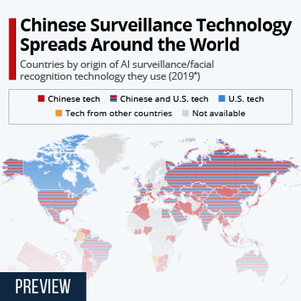


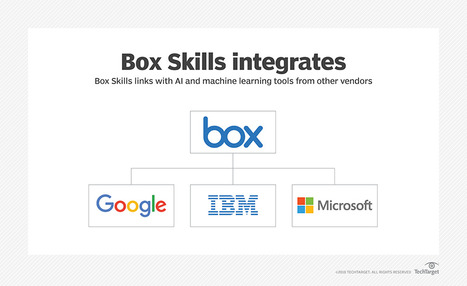



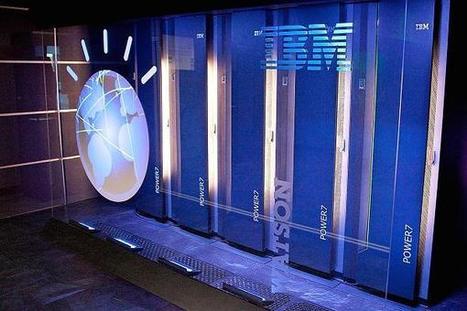




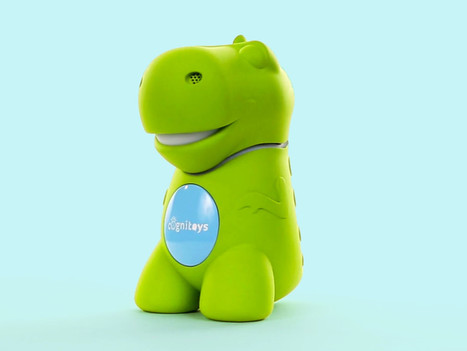
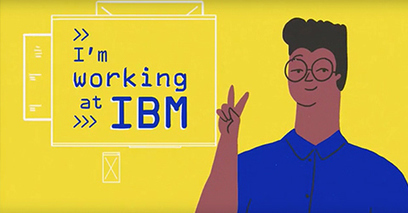
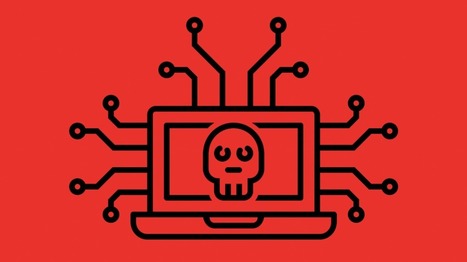
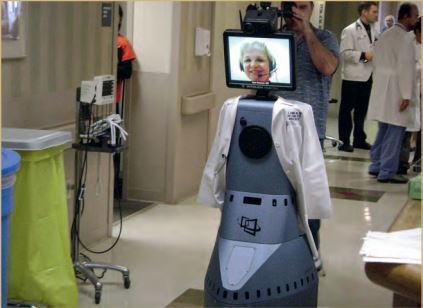




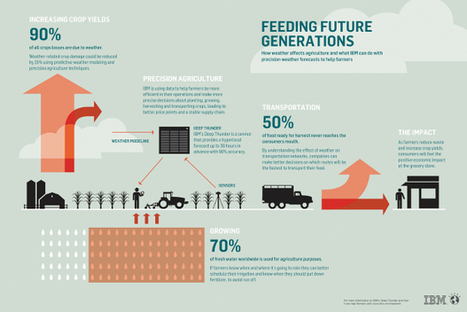
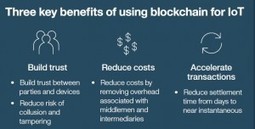







Érdekes, sőt meglepő! Mely országok hagyatkoznak teljesen kínai technológiára a polgáraik mesterséges intelligenciával (pl.: arcfelismerő rendszerrel) való megfigyelésében? Nem mind meglepetés, Latin-Amerika, Délkelet-Ázsia, Afrika és a Közel-Kelet szinte várható volt. De Hollandia, Japán és Olaszország?
Az, hogy az USA a sajátja mellett kínait is használ, és Kína a sajátja mellett amerikait is, kevésbé lep meg.
Az a statisztika is érdekes kérdéseket vet fel, hogy a hatalomgyakorlás módja és a nagyközönség szisztematikus megfigyelése között milyen a kapcsolat. A liberális demokráciák vezetnek. (Persze, ennek simán lehet annyi az oka, hogy több pénzük van effélére.)
Annak fényében, amivel állandóan vádolják a kínai technológiai cégeket és az ország vezetését (és valószínűleg nem alaptalanul), meglep, hogy a fejlett nyugati demokráciák kínai technológiára támaszkodnak egy ennyire kritikus területen.
Mi lehet ennek az oka? Nincs valódi alternatíva? A cikk szerint a három nagy amerikai cég (IBM, Palantir és Cisco) csak kullog a sokat bírált Huawei mögött. Ami azt illeti, a Palantirnak sem kell a szomszédba mennie egy kis erkölcstelen módszerért: http://collaboration.kerekfypal.blog/p/4095150120/2018/03/07/evek-ota-titokban-figyelik-new-orleans-lakoit-a-palantir-technologiajaval
#China #USA #Huawei #Palantir #IBM #Cisco #Kína #Hollandia #Netherlands #Italy #Olaszország #Japan #AI #surveillance #facial